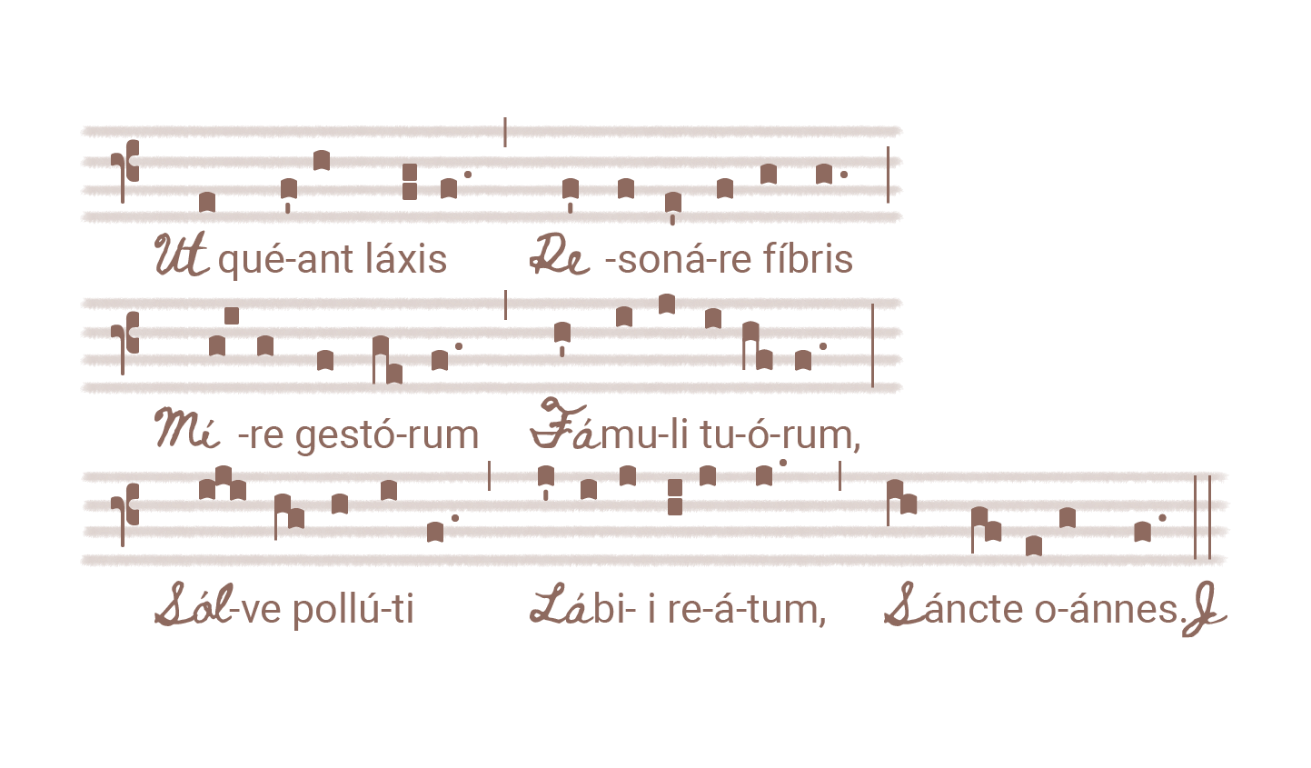Ut queant laxis is the first verse of the Hymn to San Juan Bautista, written by the Lombard historian Pablo el Diácono in the 8th century.
Later, in the seventeenth century, the Italian musicologist Giovanni Battista Doni substituted the note ut for do, since this syllable facilitated the solfeggio, ending in a vowel.
From the first syllables of the verses of this hymn the name of the musical notes of modern Latin notation is taken.
He found that the ut note was difficult to use as a solfege ut, since it ended in a voiceless consonant, and he had the idea of replacing it with the first syllable of his own surname (do ) to facilitate its pronunciation.
In the 11th century, Guido de Arezzo used the first syllable of every verse, except the last: ut, re, mi, fa, sol, la. Centuries later, Anselmo de Flandes introduced the name si for the missing note, combining the initials of Sancte Ioannes.
Another theory states that perhaps it comes from the term Dominus (Lord, in Latín). In France, ut is still used ut for some technical or theoretical musical terms; for example, trompette en ut o clé d’ut.

So they can
exalt to the full
the wonders
ethese servants of yours
forgive the lack
from our unclean lips
San Juan.
The notation of music has always been a delicate and complex element, since it should not only indicate the height of the sounds, but also the other parameters of the music:
duration, tempo, sound intensity, character, articulation, etc.
Throughout history, different notation systems have emerged, being influenced not only by artistic issues, but also by political, social and religious aspects.
Since ancient Greece, there is evidence of the existence of forms of musical notation; However, it is from the music of the Middle Ages, mainly Gregorian chant, when the system of musical notation that would evolve to the current one begins to be used.
In the Renaissance, it crystallized with the more or less definitive features with which we know it today, although - like all language - it has varied according to the expressive needs of the users.
The different forms of musical notation and the supports used have been very diverse throughout history, and are the object of study by musicologists and historians of nowerdays music
The various notation systems bear witness to the artistic and cultural reality of the moment, and are a sign of the human being's interest in preserving art for posterity.
wanted to do an exercise on the 7 existing notes because they are his tool to get to transmit his work for posterity. So it made perfect sense to use the poem that gives the name to the notes to title each of the musical pieces, which are also written in the key that gives name to each note.